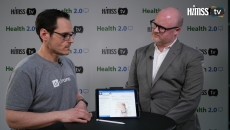Medical Devices
Steve Wretling, chief technology and innovation officer at HIMSS, says understanding the "why" is key to achieving a spectrum of innovation that is essential to creating change.
The Dadbot conversational chatbot provides a sort of "digital afterlife," says journalist James Vlahos, contributor to Wired and other magazines.
To date, attacks that have led to patient data being exposed; Going forward, attackers will seek to disrupt hospitals' operations, Moody's says.
Dr. Daniel Kraft, founder and chair of Exponential Medicine, discusses the need to cross-fertilize and blend tech innovations.
CEO Lester Stockett was among 24 telemedicine executives charged in schemes billing Medicare $1.7 billion, according to DOJ.
DrChrono co-founder and COO Daniel Kivatinos gives a rundown of his company's mobile EHR platform and demonstrates how it works on either a tablet or smartwatch.
The IoT: "Every something that comes on the market is in essence it's own small computer with an ability to find its way into something."
SMACK.health President Matthew Holt says big tech platforms and entrepreneurs are looking at the new type of tech in messaging, monitoring and managing systems.
SPONSORED
Putting the right tools in clinicians' hands can remove barriers to reconnecting with patients, while protecting data privacy, says Kathy Minnis, director of product strategy at Microsoft.
Andrew Rebhan, consultant at The Advisory Board, discusses emerging tech for which hospitals should prepare, including biopsychosocial IT, internet of things, 3D printing, augmented reality and more.







